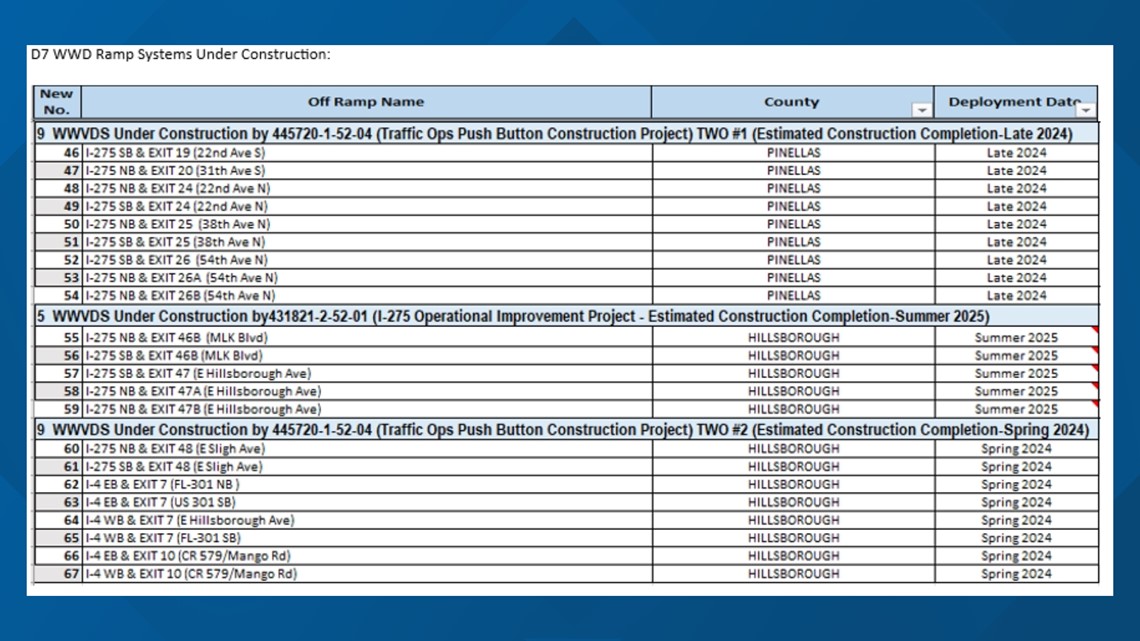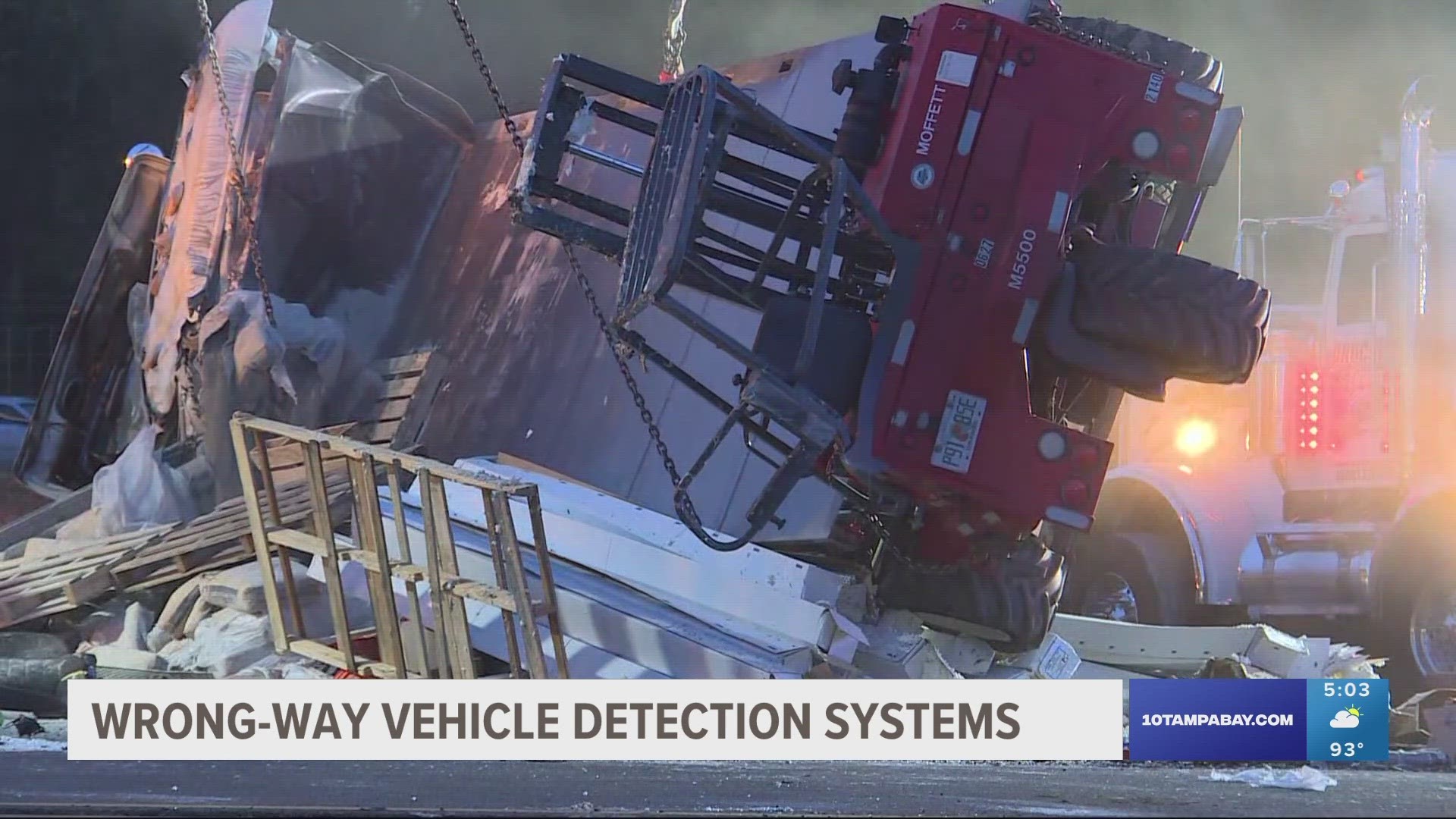TAMPA, Fla. — Since 2015, the Florida Department of Transportation has installed devices to alert drivers when they're traveling the wrong way.
The devices, called wrong-way vehicle detection systems (WWVDS), detect a car traveling the wrong way. Then, a "wrong way" sign with lights flashing red and white turns on. Law enforcement is immediately notified and dispatched. An electronic interstate sign also alerts drivers on the road a wrong-way driver may be traveling in their area.
"Unfortunately, it has been a problem," Kris Carson, an FDOT spokesperson said. "It's not just the state of Florida. It's a nationwide issue."
In 2015, FDOT shared the results of a statewide wrong-way driver study. The study looked at 2009-2013. In that time, 280 crashes have occurred on Florida’s freeways and expressways resulting in more than 400 injuries and 75 deaths.
Oftentimes injuries are more serious in wrong-way crashes.
"They are, when you have someone going up the ramp the wrong way, going against traffic, we never know what speeds they're going to be at," Carson said. "But unfortunately, we do see fatalities, a lot of these crashes."
Since 2015, 45 wrong-way vehicle detection systems have been installed on Pinellas, Hillsborough and Pasco counties interstate on-ramps.
FDOT said in the few years existing signs have been in use, it's making a difference.
"So if someone were to go up a ramp the wrong way, radar detection, there's a trigger that goes off, the signs will flash, very bright, red white, wrong way," Carson explained. "We do feel the technologies are working here in our traffic management center, they will see motorists go up the ramp the wrong way and self-correct, the signs will go off red and white flashing grabbing the motorists' attention."
FDOT has plans to install an additional 23 wrong-way vehicle detection systems on the on-ramps of Interstate 275 and Interstate 4.
This will happen in three phases, starting in the spring of next year.


FDOT looked at where wrong-way crashes were happening the most frequently to decide where to install these detection systems. Each device costs roughly $200,000.
Malique Rankin is a general assignment reporter with 10 Tampa Bay. You can email her story ideas at mrankin@10tampabay.com and follow her Facebook, Twitter, and Instagram pages.

